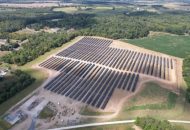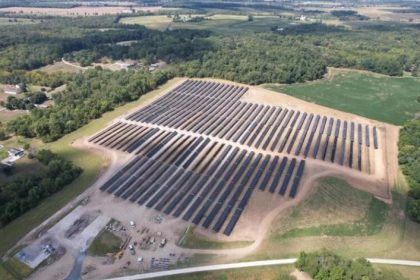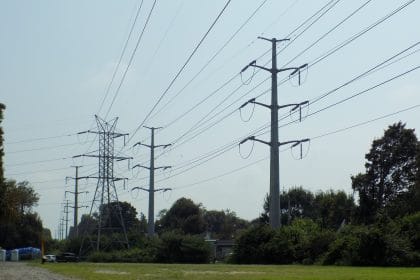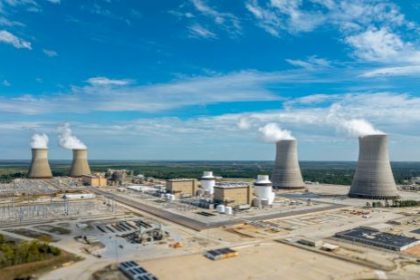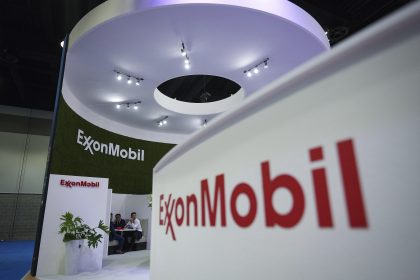Advanced Nuclear Reactors to Play Key Role in National Decarbonization, Experts Say

BERKELEY, Calif. — New modeling from climate and nuclear energy analysts at the Breakthrough Institute has shown how advanced nuclear reactor development can complement clean energy technologies to reliably meet the country’s future electricity demand.
In the report, the analysts outline how advanced nuclear power deployment can help achieve a net-zero electricity grid through early capital investment and “learning-by-doing,” meaning reducing the cost of various technologies as more are constructed. The researchers observed the setbacks of mass nuclear energy deployment in other countries and applied those lessons learned in their analysis to devise an equitable plan that achieves “far-reaching national benefits in both the near term and long term,” according to the report.
“There is a large demand for advanced nuclear and a least-cost decarbonization pathway for the U.S. electricity sector, providing that policy and political barriers can be overcome,” said Adam Stein, director for Nuclear Energy Innovation at the Breakthrough Institute. “Demand for advanced nuclear [energy] is inelastic across a broad range of cost scenarios showing that advanced nuclear could provide high value to the grid, then nuclear energy can balance variable generation from wind and solar to reliably meet U.S. power needs.”
Successful commercialization of advanced nuclear reactors could lower the total cost of a future clean energy system, Stein said. Deployment of advanced nuclear reactors could provide other tangible benefits like industrial heat, job creation, hydrogen production and the transition of fossil fuel-reliant communities to clean energy.
The report makes it clear that remote communities face a difficult pathway toward clean energy transition because of their ingrained reliance on fossil fuel-derived energy. Remote, rural and island communities currently have to contend with high energy costs associated with imported fuels and vulnerability to supply shortages. This makes them prime candidates for microreactor-sized projects — in part due to their lower power requirements.
“We should be accelerating the deployment of microreactors for heat and remote applications,” said Jigar Shah, director of the Loan Programs Office at the Department of Energy. “This can enable deep decarbonization while strengthening domestic supply chains for advanced nuclear reactors, and especially for [high-assay low-enriched uranium] fuel.”
Similar research conducted by scientists at the Idaho National Laboratory in 2014 found that initial deployment of small modular nuclear reactors would also support the addition of new renewable energy technologies. This would, in turn, reduce greenhouse gas emissions.
These small modular reactors were shown to have a higher return on investment than large conventional reactors, but barriers remain in the form of obtaining construction and operating licenses in a “reasonable timeframe” from the Nuclear Regulatory Commission in addition to the “political environment,” which makes crucial government involvement more challenging.
Existing licensing pathways through the NRC are designed for large water-cooled reactors that don’t match up with the technology that would be deployed by advanced nuclear reactors like the kind discussed in the report, Stein told The Well News. This square-peg-in-a-round-hole situation has led the BTI to engage NRC and other stakeholders in developing new pathways that are more technology inclusive and can be leveraged to allow innovation in that space.
The NRC was tasked with evaluating and updating its licensing pathways for advanced reactors under the Nuclear Energy Innovation and Modernization Act, which became public law in 2019. Sean Trambley, BTI’s director of communications, told The Well News that the NRC is “behind schedule” on this front and, consequently, opportunities for advanced reactors to get licensed nationwide are being held up.
“Our nuclear fleet in this country is pretty old, actually,” Trambley said. “Our fleet was built in the [1960s and 1970s] at the height of the Cold War, so they’re getting up there and we’re seeing a lot of plants reaching the end, although they’re not there yet. But [the NRC’s] licensing pathways to do that are all geared towards these older generations of nuclear power plants. … The next generation relies on different technologies that are inherently safer, [with] physics-based safety protocols.”
By taking the initial steps towards advanced nuclear deployment with early capital investment and governmental support, the report’s model shows that the United States can again lead global nuclear supply chains by establishing an export market pipeline aligned with domestic trade policy. Doing so would allow energy companies to fill order books and strengthen manufacturing at home in the long run, Shah said.
The modeling in the report indicates that early capital investment and learning-by-doing through deployment will lead to substantial reductions in project costs and levelized electricity costs for advanced nuclear technologies. By 2035, incorporating advanced nuclear energy in the nation’s clean energy transition could require cumulative capital investment for advanced nuclear power plant construction on the order of $150 billion to $220 billion. This could then grow to a total of $830 billion to $1.1 trillion by 2050.
By initiating widespread commercial deployment of advanced reactors in the early-2030s, the nuclear energy sector could rapidly accelerate to supply around 20% to 48% of domestic clean electricity generation by 2050. This would equate to between 1,400 and 3,600 terawatt-hours per year, according to the report. Under the model, nuclear capacity could generate 19-48 gigawatts-electric in 2035, grow to 54-150 gigawatts-electric in 2040, and finally reach around 190-470 gigawatts-electric by 2050.
“There’s a significant amount of jobs that are created from these plants,” Stein said. “And as we know from existing nuclear plants, these are going to be very stable, long-term jobs. Not jobs that move from site to site all the time or are relatively short lived.
“We did not characterize other jobs created [in the report] that follow on from the plant that are, say, support jobs in the community or even the rest of the supply chain. However, we are optimistic that it is a very good area for future research.”
Reece can be reached at [email protected] and @ReeceNations











